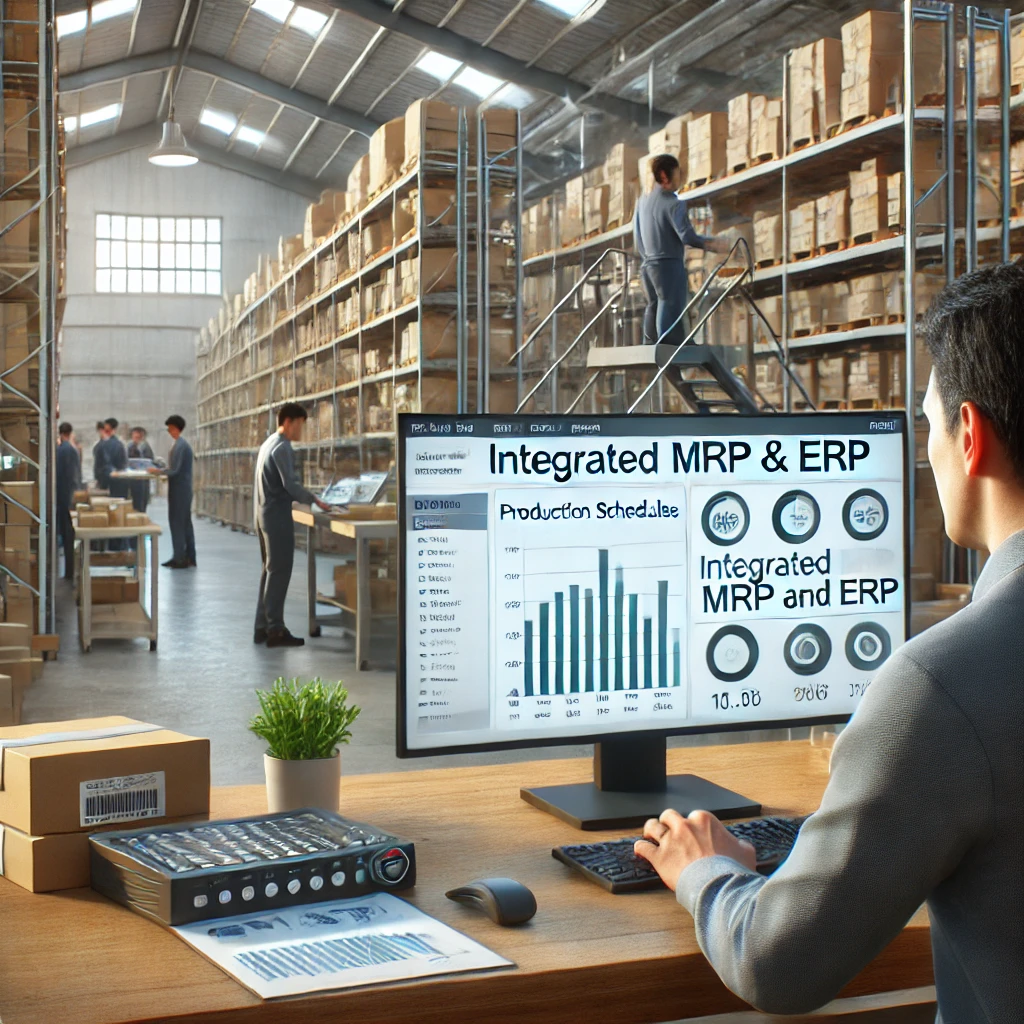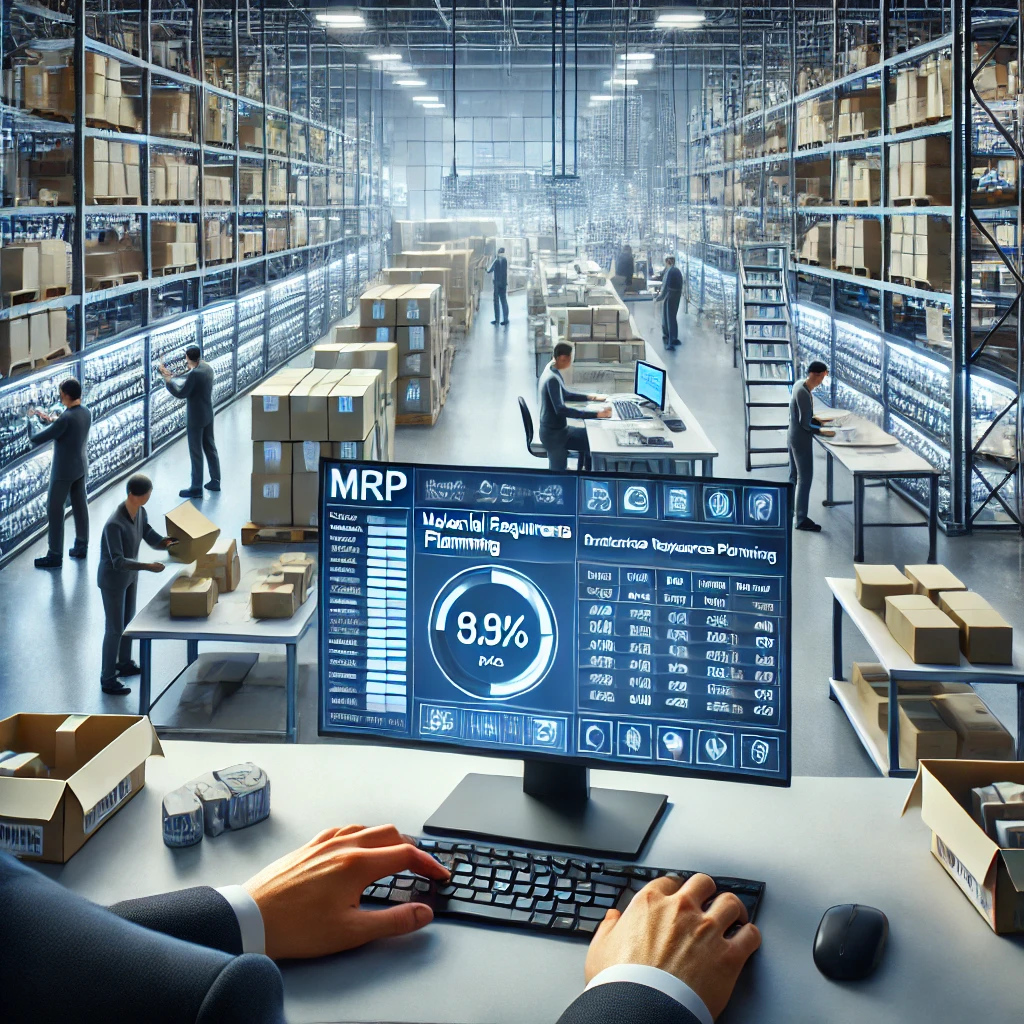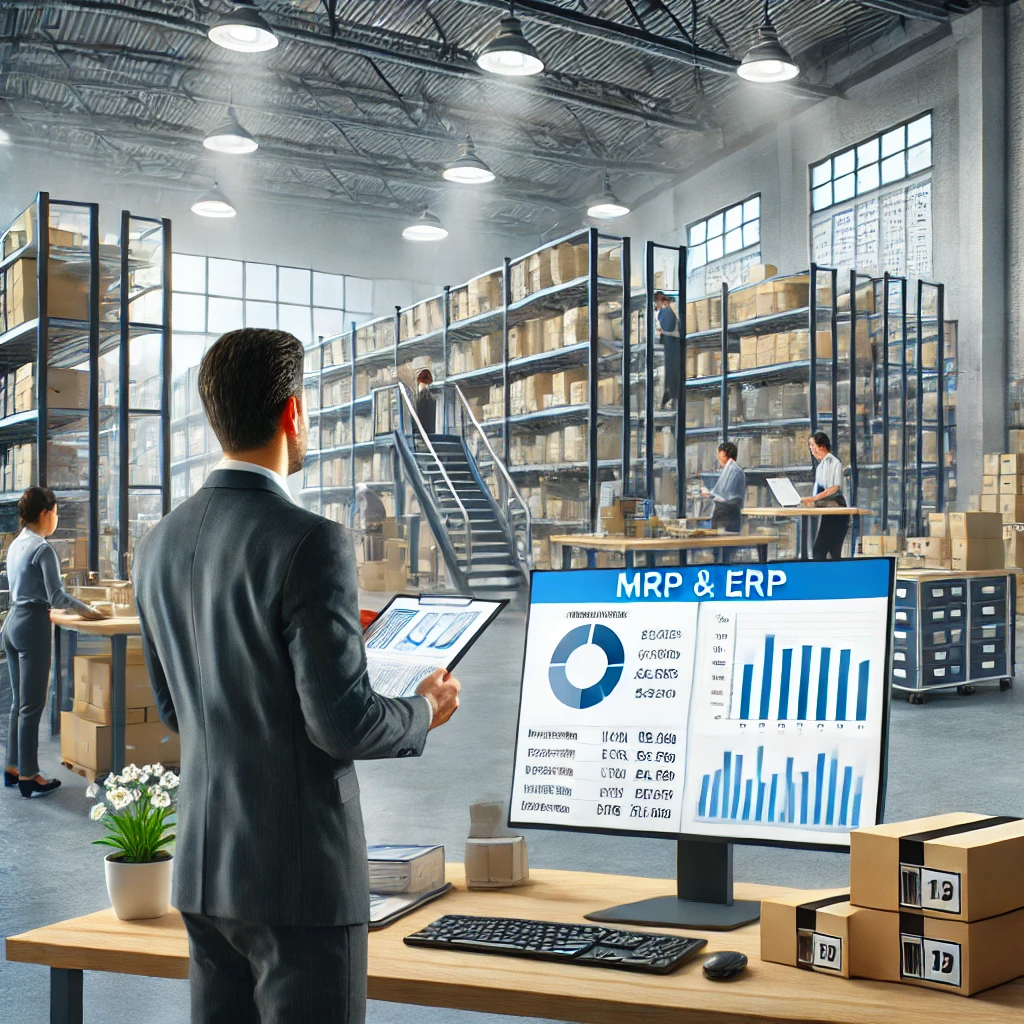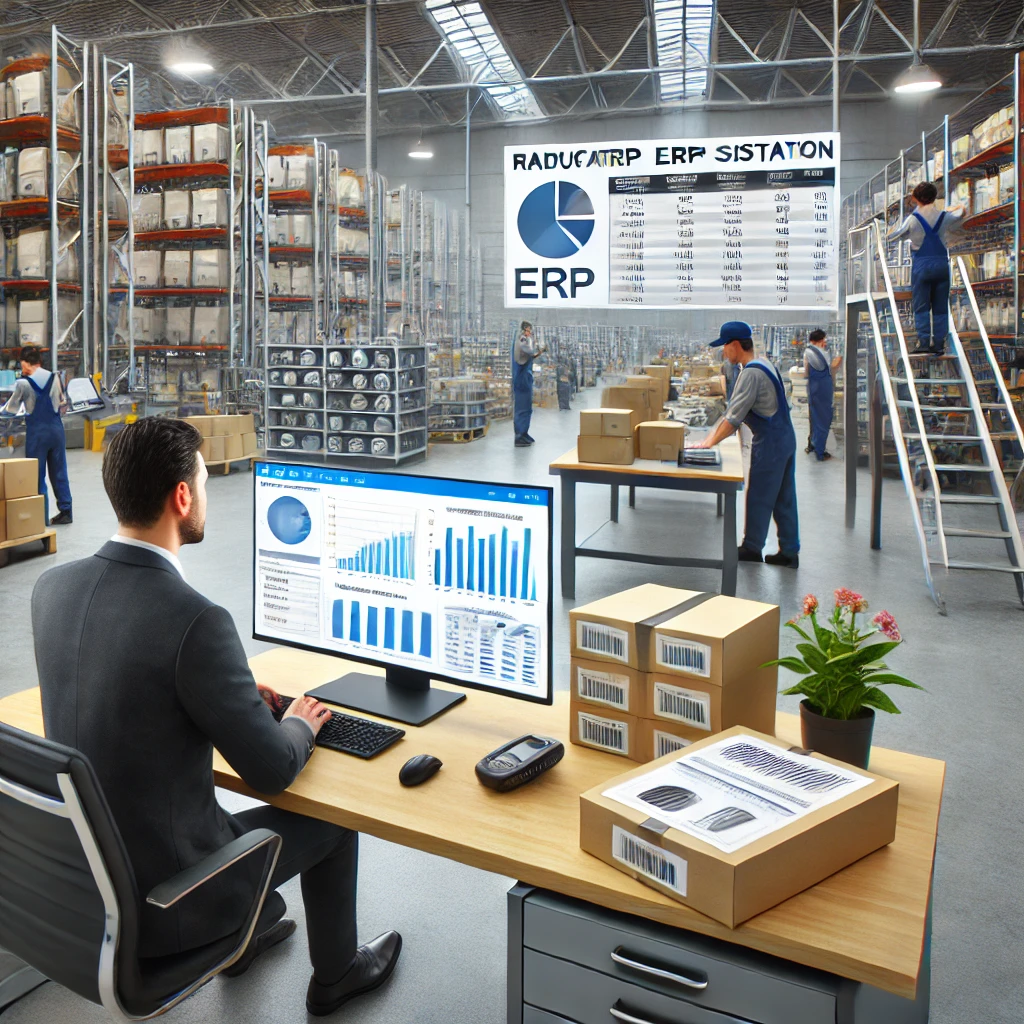Integrating MRP with ERP: Creating a Unified Manufacturing Management System

Understanding MRP and ERP
Before diving into integration, let’s briefly review these two systems:
Material Requirements Planning (MRP)
- Focus: Production planning and inventory control
- Key functions: Demand forecasting, production scheduling, inventory management
Enterprise Resource Planning (ERP)
- Focus: Company-wide resource management
- Key functions: Accounting, human resources, customer relationship management, supply chain management
Benefits of Integrating MRP with ERP

- Improved Data Accuracy and Consistency
- Eliminates data silos and reduces manual data entry
- Ensures all departments work with the same, up-to-date information
- Enhanced Visibility Across the Organization
- Provides a holistic view of manufacturing operations in the context of overall business performance
- Enables better-informed decision-making at all levels
- Streamlined Operations
- Automates workflows between manufacturing and other business functions
- Reduces redundancies and improves process efficiency
- Better Inventory Management
- Combines MRP’s detailed production planning with ERP’s broader supply chain management
- Optimizes inventory levels across the entire organization
- Improved Customer Service
- Enables more accurate delivery date promises
- Facilitates better communication between sales, production, and logistics
- Enhanced Financial Management
- Provides real-time cost information for production activities
- Improves budgeting and financial forecasting accuracy
- Scalability and Flexibility
- Supports business growth with a unified, scalable system
- Allows for easier addition of new functionalities as needs evolve
Challenges in MRP-ERP Integration
- Complexity of Integration
- Aligning different data structures and processes can be complex
- May require significant customization
- Data Migration and Cleansing
- Ensuring data accuracy and consistency during migration is crucial
- May require extensive data cleansing efforts
- User Adoption
- Staff may need to learn new processes and interfaces
- Resistance to change can hinder successful implementation
- Cost Considerations
- Integration projects can be expensive, requiring careful budgeting and ROI analysis
- Ongoing maintenance and upgrade costs need to be considered
- System Performance
- Integrated systems may face performance issues if not properly optimized
- Requires careful planning to ensure system responsiveness
Best Practices for Successful MRP-ERP Integration
- Conduct a Thorough Needs Analysis
- Clearly define your integration goals and requirements
- Involve stakeholders from all relevant departments
- Choose the Right Integration Approach
- Options include point-to-point integration, middleware, or choosing an ERP with built-in MRP functionality
- Select the approach that best fits your organization’s needs and resources
- Ensure Data Quality
- Implement data governance policies
- Cleanse and validate data before migration
- Plan for Scalability
- Choose a solution that can grow with your business
- Consider future needs when designing the integration
- Prioritize User Experience
- Design intuitive interfaces that streamline workflows
- Provide comprehensive training and support for users
- Implement in Phases
- Start with core functionalities and expand gradually
- Allow time for users to adapt to changes
- Establish Clear Communication Channels
- Keep all stakeholders informed throughout the integration process
- Create a feedback loop for continuous improvement
- Optimize System Performance
- Work with IT to ensure proper system architecture and infrastructure
- Regularly monitor and tune system performance
- Maintain Flexibility
- Be prepared to adjust your integration strategy as needed
- Regularly review and update your integrated system to meet evolving business needs

Steps for Integrating MRP with ERP
- Assessment and Planning
- Evaluate current systems and processes
- Define integration goals and scope
- Develop a detailed project plan
- System Selection (if applicable)
- If not using existing systems, select an ERP with strong MRP capabilities or vice versa
- Ensure the chosen system(s) meet your integration requirements
- Data Preparation
- Cleanse and standardize data from existing systems
- Map data fields between MRP and ERP systems
- Integration Design
- Design the technical architecture for integration
- Define data flows and business processes
- Development and Configuration
- Customize systems as needed
- Develop necessary integrations or interfaces
- Testing
- Conduct thorough testing of all integrated functionalities
- Perform user acceptance testing
- Training
- Provide comprehensive training to all users
- Develop user guides and documentation
- Go-Live and Support
- Plan a phased or full go-live approach
- Provide robust support during and after implementation
- Continuous Improvement
- Regularly review system performance and user feedback
- Implement updates and enhancements as needed
Future Trends in MRP-ERP Integration
- Cloud-Based Integration: Moving towards cloud-based solutions for improved accessibility and scalability
- AI and Machine Learning: Enhancing predictive capabilities and decision-making
- IoT Integration: Incorporating real-time data from connected devices for improved accuracy
- Advanced Analytics: Leveraging big data for deeper insights and optimization
- Mobile Accessibility: Enabling access to integrated systems from mobile devices

Conclusion
Integrating MRP with ERP creates a powerful, unified manufacturing management system that can significantly enhance operational efficiency, decision-making, and overall business performance. While the integration process can be complex and challenging, the benefits far outweigh the difficulties when implemented correctly.
By following best practices and taking a strategic approach to integration, manufacturers can create a seamless flow of information across their organization, leading to improved productivity, better inventory management, and enhanced customer satisfaction. As technology continues to evolve, integrated MRP-ERP systems will play an increasingly crucial role in maintaining competitiveness in the global manufacturing landscape.
How Linbis Can Help
At Linbis, we understand the complexities and opportunities presented by integrating MRP systems with ERP solutions. Our expertise in logistics and manufacturing software development allows us to offer comprehensive support in creating a unified manufacturing management system tailored to your specific needs.
Here’s how Linbis can assist your business in integrating MRP with ERP:
- Customized Integration Solutions: We develop tailored integration strategies that align with your specific business processes and goals.
- Seamless Data Flow: Our team ensures smooth data transfer between your MRP and ERP systems, eliminating silos and improving data consistency.
- User-Friendly Interfaces: We create intuitive interfaces that streamline workflows across integrated systems, improving user adoption and productivity.
- Advanced Analytics: Our solutions incorporate powerful analytics tools that leverage data from both MRP and ERP systems for deeper insights.
- Scalable Architecture: We design integrations with future growth in mind, ensuring your unified system can evolve with your business.
- Performance Optimization: Our experts optimize system performance to ensure responsiveness and reliability of your integrated solution.
- Comprehensive Training: We provide thorough training programs to ensure your team can effectively use and maintain the integrated system.
- Ongoing Support: Linbis offers continued support and maintenance, helping you maximize the benefits of your integrated MRP-ERP system.
- Phased Implementation: We can structure the integration process in phases, minimizing disruption to your operations.
- Future-Proofing: Our team stays abreast of emerging technologies, helping you incorporate innovations like AI, IoT, and advanced analytics into your integrated system.
By partnering with Linbis, you’re not just getting an integration service – you’re gaining a technology partner committed to enhancing your entire manufacturing management process. Our team of experts can guide you through every step of the MRP-ERP integration journey, ensuring that your unified system delivers maximum value to your business.
Remember, while Linbis provides the technological expertise, the success of your MRP-ERP integration ultimately depends on how well it aligns with your business processes and goals. Let Linbis be your guide in leveraging these powerful systems to create a truly unified manufacturing management solution, driving your business forward in an increasingly competitive global market.
